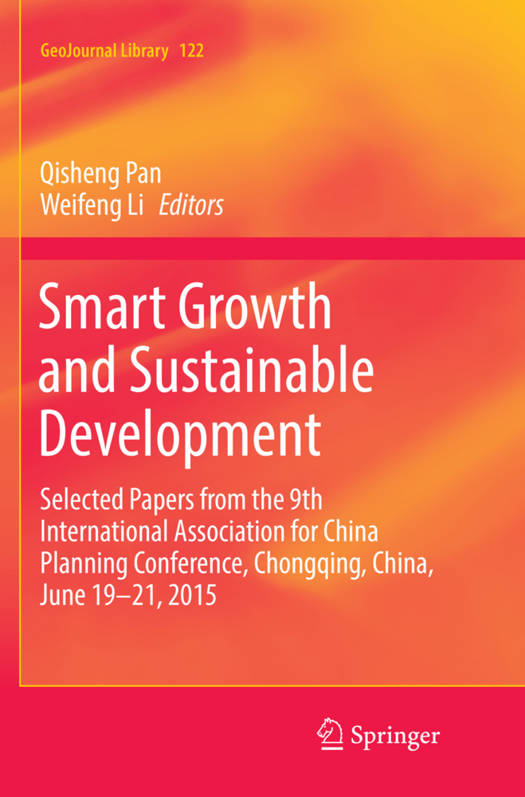
- Afhalen na 1 uur in een winkel met voorraad
- Gratis thuislevering in België vanaf € 30
- Ruim aanbod met 7 miljoen producten
- Afhalen na 1 uur in een winkel met voorraad
- Gratis thuislevering in België vanaf € 30
- Ruim aanbod met 7 miljoen producten
Zoeken
Smart Growth and Sustainable Development
Selected Papers from the 9th International Association for China Planning Conference, Chongqing, China, June 19 - 21, 2015
€ 52,95
+ 105 punten
Omschrijving
This book explores how to tackle the challenges of urbanization through international lessons in sustainable development and smart growth strategies. As readers will discover, smart growth offers an approach to urbanization with the aim to: improve the efficiency of land use, protect the natural and cultural environment, promote economic prosperity and improve the quality of life. Authors address various challenges experienced in China, including deepening regional imbalances, an aging population, wholesale environmental degradation and traffic congestion. China's official long-term urbanization plan sets many challenges for urban planners, these range from implementation of the plan and financing, to protection of vulnerable groups and social justice. This book brings readers up to date on the use of big data and modern technologies such as geographic information system technology (GIS). The work encompasses themes of environmental planning, community development, cultural heritage preservation, land use and transportation, urban studies, climate change, housing and community development, infrastructure planning, disaster planning and social equity. Authors present the very latest theories and practices of smart growth and offer many valuable insights to urban planners and scholars, as well as policy makers.
Specificaties
Betrokkenen
- Uitgeverij:
Inhoud
- Aantal bladzijden:
- 259
- Taal:
- Engels
- Reeks:
- Reeksnummer:
- nr. 122
Eigenschappen
- Productcode (EAN):
- 9783319839080
- Verschijningsdatum:
- 29/04/2018
- Uitvoering:
- Paperback
- Formaat:
- Trade paperback (VS)
- Afmetingen:
- 156 mm x 234 mm
- Gewicht:
- 390 g

Alleen bij Standaard Boekhandel
+ 105 punten op je klantenkaart van Standaard Boekhandel
Beoordelingen
We publiceren alleen reviews die voldoen aan de voorwaarden voor reviews. Bekijk onze voorwaarden voor reviews.










